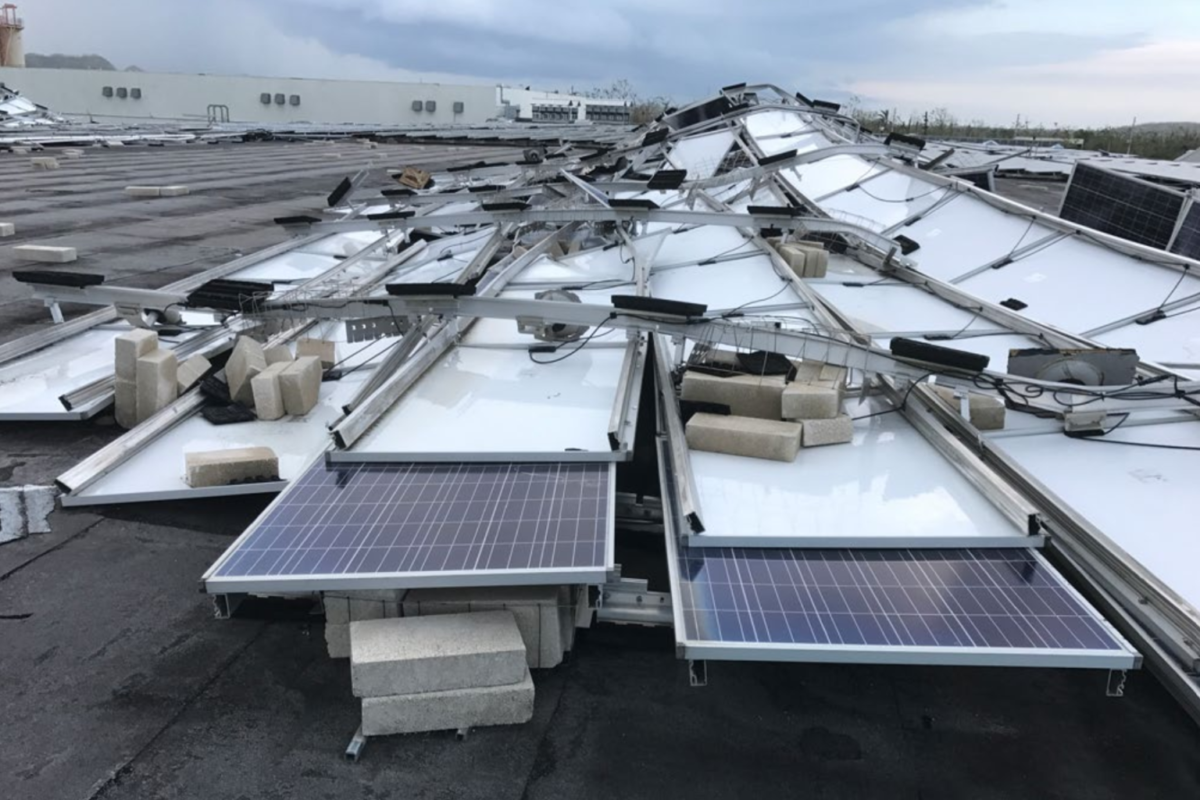
Texas weather is unpredictable — one moment it’s sunny, the next, there’s hail, high winds, and lightning. While solar panels are built to endure tough conditions, severe storms can still cause damage that affects performance or safety.
Knowing what to look for after a storm and how to respond quickly can protect your investment and prevent costly long-term repairs.
At Sunaura Solar, we specialize in post-storm solar inspections, repairs, and reinstallation — helping homeowners get their systems back online safely and efficiently. Here’s how storms affect your solar system and what steps to take next.
1. Hail Can Crack or Fracture Panels
Most solar panels are tested to withstand one-inch hailstones, but larger impacts can cause cracks invisible to the naked eye.
What Can Happen:
- Reduced energy output from micro-cracks
- Moisture intrusion through damaged seals
- Long-term electrical degradation
Sunaura Solar’s Fix:
We inspect each panel for micro-damage using specialized tools and replace only what’s necessary to restore full performance.
2. High Winds Can Shift Mounts or Wiring
Strong winds can loosen mounting hardware or pull on electrical conduits. Even slight movement can affect roof seals or create leaks.
What Can Happen:
- Misaligned panels
- Roof flashing displacement
- Exposed or stretched wiring
Sunaura Solar’s Fix:
We tighten and reseal all mounts, check electrical connections, and confirm the system is still grounded properly and structurally sound.
3. Lightning Can Trigger Electrical Faults
Even if your home wasn’t directly struck, nearby lightning can cause power surges that damage inverters or control systems.
What Can Happen:
- Tripped breakers or inverter shutdowns
- Damaged surge protection equipment
- System communication loss
Sunaura Solar’s Fix:
We test all electrical circuits, replace damaged components, and verify that your surge protection system is still functioning properly.
4. Heavy Rain and Flooding Can Affect Roof Seals
Prolonged rain or hail can test the limits of roof flashings and waterproof seals under your panels.
What Can Happen:
- Leaks around mounts or conduits
- Water buildup under panels
- Mold or roof material deterioration
Sunaura Solar’s Fix:
We reseal affected areas, inspect for roof moisture, and ensure watertight protection around all mounting points.
5. Debris Can Scratch or Shade Panels
Leaves, branches, and dirt can accumulate on panels after a storm, blocking sunlight and reducing efficiency.
What Can Happen:
- Temporary power loss
- Long-term abrasion marks if left untreated
Sunaura Solar’s Fix:
We perform a full cleaning using solar-safe solutions, removing debris and restoring optimal energy absorption.
6. System Monitoring May Show False Readings
After storms, data irregularities are common — but they don’t always mean your system is fine.
What Can Happen:
- False “no error” readings despite internal damage
- Gaps in data from inverter shutdowns
Sunaura Solar’s Fix:
We confirm monitoring accuracy through on-site testing, ensuring performance data reflects true system health.
7. Roof Replacement May Be Necessary
If your roof sustained heavy damage, your panels must be removed before roofing work begins.
Sunaura Solar’s Fix:
We handle the Detach & Reset process — safely removing, storing, and reinstalling panels after roofing is complete, with full system testing afterward.
8. Insurance Documentation Is Critical
Proper documentation helps homeowners file successful storm damage claims for both solar and roof repairs.
Sunaura Solar’s Fix:
We provide detailed inspection reports, photos, and system performance data to support your insurance process.
9. Post-Storm Inspections Protect Against Future Failures
Even if your system appears fine, hidden damage can reduce performance over time.
Sunaura Solar’s Fix:
We perform a complete post-storm inspection that includes electrical testing, roof integrity checks, and voltage verification.














